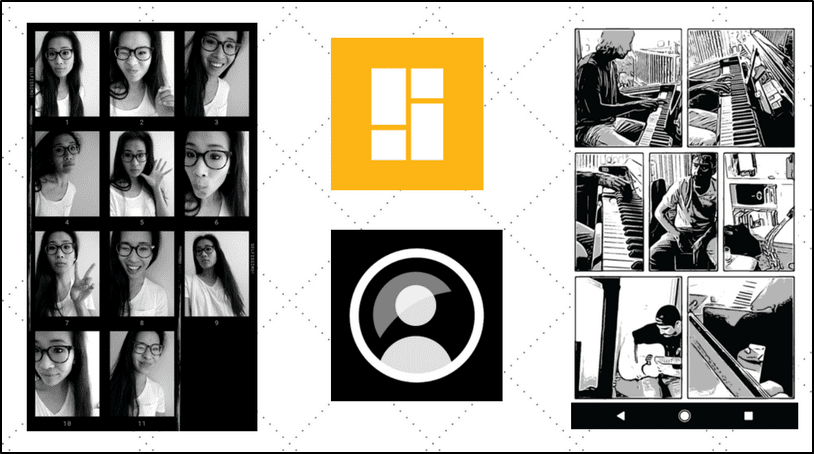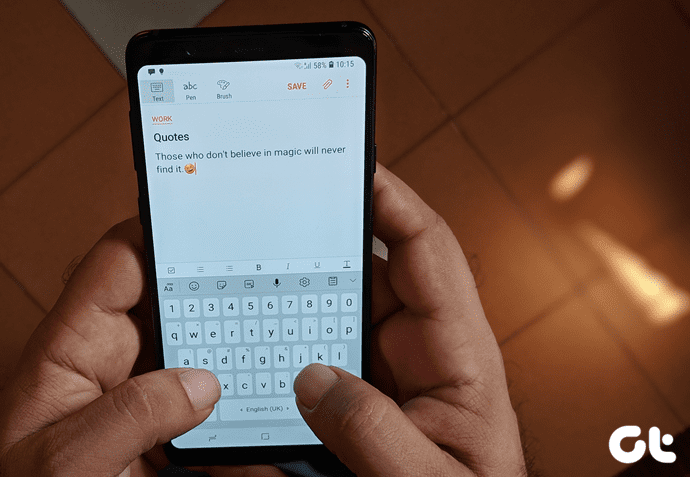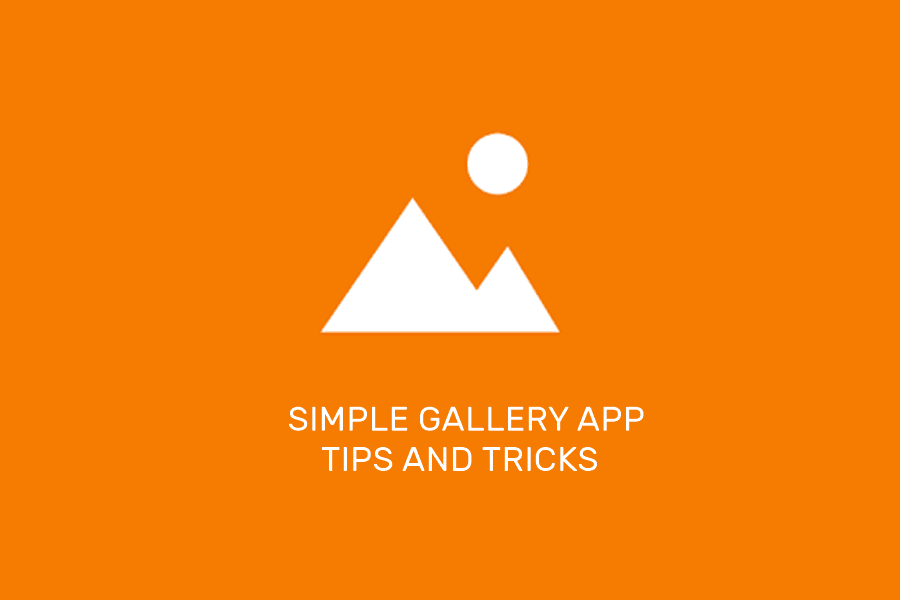Two apps that we are going to compare today are Google Keep and Todoist. Both the apps take a different approach when it comes to creating and managing to-do lists. Google Keep is a free app that is available on all platforms, and lets you work with text, image, and audio notes. Download Keep Todoist is a robust app that is also available on all platforms, supports sub-projects, uses natural language, integrates with third-party apps, and uses goals to track progress. Download Todoist
1. Notes and To-do Lists
One crucial distinction is that Keep is a note-taking app that supports both notes and to-do lists. Todoist, on the other hand, is an app for lists only, but you can add comments. In Google Keep, a note can either be a text/image/audio note or one with checkboxes. Can’t be both at the same time — a bit limiting. Todoist is explicitly built to function as a task manager where you can add individual tasks and create projects and sub-projects to handle the workload. Both Keep and Todoist are smart for they move checked off items to the bottom of the list. Also, if you create a new task that is already on the list, Keep and Todoist will remind you of the same. As mentioned above, you can use Keep to take notes in a variety of formats like text, image, and audio notes. You can also draw inside notes if doodling is your thing. Also, Keep will convert audio notes to text on the fly so you can edit it as you want. Similarly, it will grab text from images using OCR which can be useful for scanning business cards or signs. To sum it up, where Keep will let you take notes in a variety of formats giving you more input options, Todoist will let you create more levels and go deeper and handle complex projects with multiple layers.
2. Managing and Sorting
Jotting down tasks that you are supposed to take care of is one thing, but managing these tasks and finding them is another. Both Keep and Todoist will let you add a reminder based on either date and time or location. Location-based reminders are especially useful when you are out running errands. Todoist is more flexible in task management as it allows you to move tasks between lists and projects. Just drag and drop. In Keep, you can’t move tasks from one note to another but can only reorder them. Todoist will also let you create subtasks and reorder them easily. Both Keep and Todoist will let you mark notes/tasks with labels. Some people also call them tags. But you cannot create projects in Keep. Instead, Keep uses visual cues and lets you color code notes. That makes things interesting. You can choose different colors for different projects making it easier to distinguish notes instantly. Todoist will let you set priorities to projects and tasks at a glance, which tasks need your immediate attention and which one can you afford to stall. Each level of priority is marked with a flag of a different color. Once you begin to use a particular service for your brain-dumping sessions, things can quickly go out of hand with hundreds of notes and tasks lying around. This is when you realize you need a solid search and sort feature. Keep will show you a list of tags or labels on the left that you can use to sort also search for text. I have been using Keep for a while now, and can easily find what I am looking for most of the time. Todoist is much better at drilling down tasks. You can sort them by priority, labels, and project which gives you a perspective on what you want to accomplish at the moment. Everything is easily accessible in the sidebar. You can also sort tasks based on whether they are due Today or in the Next 7 days. This way, you can concentrate on the coming week instead of worrying about the next month. Again, an excellent way to prioritize your workflow. Todoist will also let you sort tasks and projects based on name and person responsible if you are working in a collaborative environment. You can assign reminders to notes, that can be either a note or a list, and Keep will remind you at the right moment. A quick look in the sidebar will let you see all your notes and reminders separately. Finally, there are Karma points in Todoist that act as a motivator to complete your tasks and get the satisfaction of checking off that task in the list. The idea is simple. You set a goal and create a list of tasks that will eventually help you achieve it. As you work towards your goals, and as you check off more tasks, you gain more points. One critical difference is that you can add files to tasks in Todoist whereas notes in Keep only support images and links. Frankly, if you need the incentive to complete your work, you might be in the wrong profession. But hey, that’s just me. Ideally, you ought to enjoy it so much that you do it because it’s fun. Alright, enough with the philosophy.
3. Integrations and Collaboration
Keep is a Google product which means, and you probably already knew it, it integrates with other Google apps like Docs, Slides, Forms, Sheets, and Gmail too. You can easily create a note for any Doc or Sheet, but a Keep note can only be turned into a Doc. That actually makes sense. Collaborating on Keep is as easy as clicking on the Share button and sending an email invite. He/she can then begin adding to the note or checklist. Good for when you are shopping in a mall and need to harmonize the items that each of you have added. Todoist works in a similar manner where you can invite anyone to add to or edit a task list in real time. You do this by sending an email invite. Because Todoist is built for enterprises and companies, you can also invite collaborators from other projects if they are already using Todoist. Like when you need help from the admin guy to resolve a specific issue.
4. Pricing and Platforms
Being a Google product, Keep is free to use with no limit on size or number of notes. It will not count towards your Google Drive’s 15GB of free storage either. Todoist offers different plans starting with free where you don’t get to set reminders or add labels, premium at $29 for individuals, and $29 per user for businesses. Most users will need a premium plan because of the limitations they have set. Both Keep and Todoist are available on all platforms like Windows and Mac, Android and iOS, and have extensions/add-ons for popular browsers like Firefox and Chrome. So you can clip web pages and sync all your data across devices.
Notes are Forever
Most of us who are in the habit of taking notes have hundreds and thousands of notes under our belly. The real problem occurs when you have to shift base and use a different app or service. It is better to begin right, think long-term, and select a note/task app that meets your needs from the beginning. If you need a simple note-taking tool with a to-do list manager, Google Keep is very versatile and powerful. Todoist is more suitable for advanced users with complicated work lives, multiple projects or those who need an enterprise solution. Next up: Want to know how Google Keep compares against Google Tasks? Check out the link below to learn how they differ. The above article may contain affiliate links which help support Guiding Tech. However, it does not affect our editorial integrity. The content remains unbiased and authentic.



























